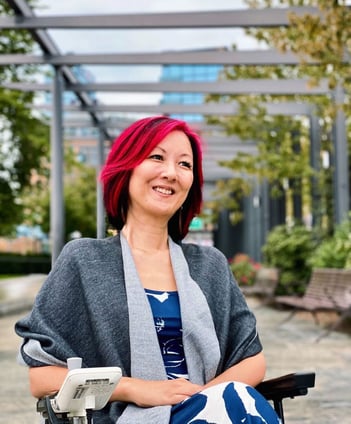Community Spotlight: Kam Redlawsk
Join Our Movement
What started as an idea has become a national movement. With your support, we can influence policy and inspire lasting change.
Become an Advocate
Now 44 years old, Redlawsk’s disease has progressed considerably. She can’t walk or stand. During the pandemic, she lost the ability to lift her arms and move her fingers. She can no longer drive or feed herself. Most recently, she’s started to experience neck drop, and nothing can stop the disease progression.
“Disability is the only identity that any of us can become a member of at any time. The more self-acceptance you have, the more empowered you will feel,” says Redlawsk.
Over time, as her abilities changed, Redlawsk had to adapt her activities.
“My target is constantly moving. I try to find new ways to fill the losses,” says Redlawsk. “When I lost the ability to cook, I started illustrating. There is always something more. It is up to us to be the seekers and find what’s next. You need to face the emotions and move on and know there is more out there.”
Redlawsk offers three pieces of advice to those who may be struggling.
“Number one, you can’t keep it inside. Number two, you need to find your community. This helps so much. Number three, it is easy to think of ourselves as living a certain life, and if you are not there, you are out of the game.”
“The journey to becoming an advocate was unexpected and unplanned, but I’m grateful to share and impart some knowledge about my disabled journey so that others will know they’re not alone or less than just because their body or mind doesn’t fit the typical spectrum. We are all different, and our differences are our greatest contribution to others around us.”
